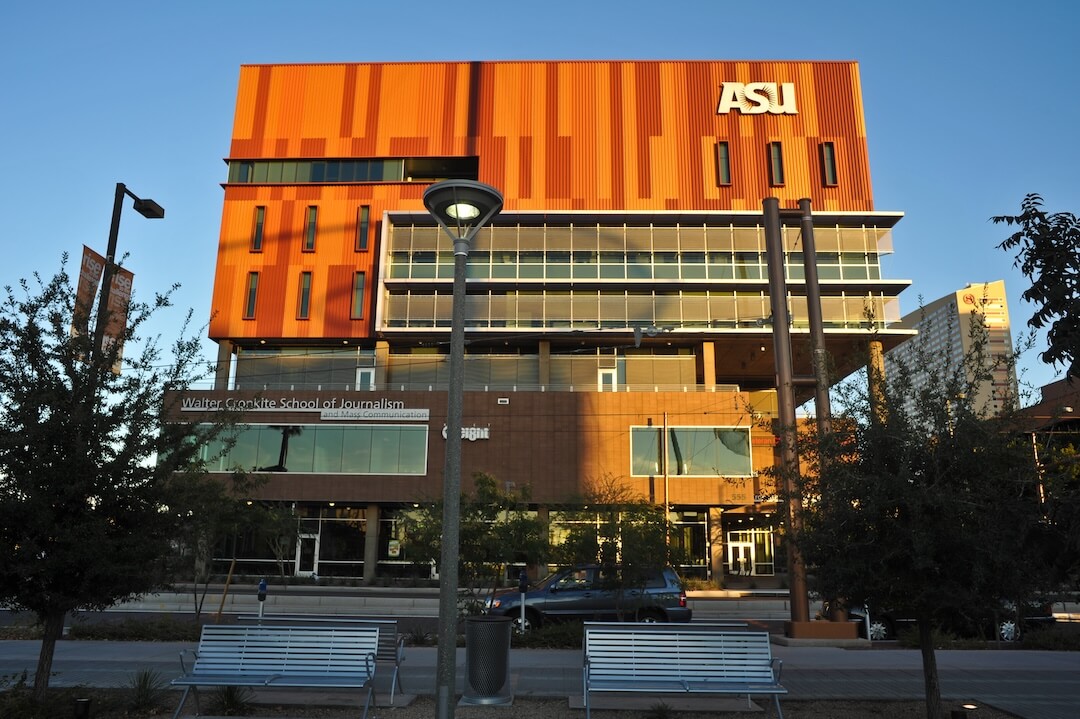 Covering COVID-19 is a daily Poynter briefing of story ideas about the coronavirus and other timely topics for journalists, written by senior faculty Al Tompkins. Sign up here to have it delivered to your inbox every weekday morning.
Covering COVID-19 is a daily Poynter briefing of story ideas about the coronavirus and other timely topics for journalists, written by senior faculty Al Tompkins. Sign up here to have it delivered to your inbox every weekday morning.
Hurricane Ida hit one of the most vulnerable parts of America — vulnerable partly because COVID-19 is rampant there and vaccinations are among the lowest in the country.
Gov. John Bel Edwards said Louisiana evacuated 22 nursing homes, 18 assisted living facilities and 61 intermediate care facilities. But no critical care hospitals could evacuate because there is no place outside of the storm area to send people under hospital care.
Before the storm arrived, Louisiana’s Department of Health estimated it had 2,684 COVID-19 patients in hospitals. 479 of them are on ventilators. Intensive care units statewide were 90% full before the storm. State health officials are warning people not to go to hospital emergency rooms unless they have “life threatening” problems.
Every single parish was listed as the highest risk as Ida came ashore.
Some of the areas directly in the path of Hurricane Ida are among the least vaccinated parts of the entire country, but have been slowly increasing their vaccination rates in the last couple of weeks.
The storm will “slow down petroleum and natural gas exports and imports,” said Flynn. Gulf of Mexico offshore wells account for 17% of U.S. crude oil production and 5% of dry natural gas production and more than 45% of total U.S. refining capacity is along the Gulf Coast.
[the_ad id=”667826″]
Charities on the ground for Ida

An abandoned vehicle is half submerged in a ditch next to a near flooded highway as the outer bands of Hurricane Ida arrive Sunday, Aug. 29, 2021, in Bay Saint Louis, Miss. (AP Photo/Steve Helber)
As much as you might want to send relief supplies, the organizations that are experts in this kind of recovery say what they need is money. They can buy supplies in bulk quantities that make donations go further. Good 360 gives examples of what some well-meaning people send after disasters:
According to a study led by José Holguín-Veras, an expert on humanitarian logistics, 50 to 70 percent of the goods that arrive during emergencies is not needed or appropriate for the recovery nor the region.
Some of the most mismatched items sent during times of crisis, as catalogued by the United States Agency for International Development (USAID) and its Center for International Disaster Information (CIDI), include:
- weight-loss drinks and chandeliers donated after the Rwandan genocide of 1994
- prom gowns given to Honduras after Hurricane Mitch
- fertility drugs sent to the island nation after the 2010 Haiti earthquake
CNBC put together a list of some of the dependable groups that activate for big storms:
- Nonprofit Direct Relief has a long history of assisting those affected by hurricanes in the U.S. by providing medical supplies and care.
- The Virginia-based nonprofit Mercy Chefs focuses on bringing professionally prepared meals for victims, volunteers and first responders involved in natural disasters.
- Operation USA specializes in disaster relief.
- United Cajun Navy a staple in Gulf area rescues and recovery efforts, this is theirFacebook page with updates.
Good360 offers this advice:
It’s natural to see images of devastation on TV and have an immediate, emotionally driven urge to “do something.” But this often leads to unintentional consequences, poor planning and unwanted donations. For example, one California community was inundated with 50,000 sticks of deodorant after a devastating wildfire. Disaster relief experts call this the “second disaster.”
To avoid wasteful giving, take the long-term view when planning your disaster response. Many disaster-hit communities are flooded with donations in the first days and weeks of a catastrophe, but they are left to fend for themselves in the months and years to come.
Shift your giving from a reactionary approach to one that’s focused on creating resiliency. Consider how you can help a community build back even stronger than they were before the disaster.
Be careful about terms ‘overtopping’ and ‘failure’ when reporting on levees
As you know, New Orleans depends on its levee system, which failed in Hurricane Katrina, to prevent major flooding. Emergency response officials say it is likely that the storm waters will flow over the tops of some levees, but it is very different and much less concerning than a levee failure.
Some hospitals are now using emergency backup oxygen supplies
At first, the oxygen shortage was just liquid oxygen. But now, hospitals in Florida, Mississippi, Georgia, North Carolina, South Carolina and West Virginia are running short of oxygen supplies. Some places are down to just a day or two’s worth of supplies. Donna Cross, senior director of facilities and construction at Premier, a health care performance improvement company, told CNN:
“Normally, an oxygen tank would be about 90% full, and the suppliers would let them get down to a refill level of 30-40% left in their tank, giving them a three- to five-day cushion of supply,” said Cross. “What’s happening now is that hospitals are running down to about 10-20%, which is a one- to two-day supply on hand, before they’re getting backfilled.”
Even when they’re getting backfill, it’s only a partial supply of about 50%, Cross said. “It is very critical situation.”
[the_ad id=”667872″]
Contaminated Moderna vaccines in Japan
This does not affect vaccines in North America, but any bad publicity about vaccine safety is bad news everywhere. The Japanese government has suspended use of the Moderna vaccine in Okinawa after a large-scale vaccine center there found contaminants in the vaccine vials.
Japanese broadcaster NHK reports that black substances were spotted in syringes and in a vial, while pink substances were found in a different syringe at an Okinawa vaccination center. Two people who took the vaccines produced from the Takeda production facility died. Moderna said over the weekend that it was investigating but knows of no proof that there is a direct connection between the vaccine and the deaths.
I pass this along to you because without a doubt, vaccine skeptics will be pointing to this incident.
What we learn from how COVID spread in one school classroom
Researchers just published a detailed report about how COVID-19 spread in one California classroom from an unvaccinated teacher to her students. The study says:
The teacher reported becoming symptomatic on May 19, but continued to work for 2 days before receiving a test on May 21. On occasion during this time, the teacher read aloud unmasked to the class despite school requirements to mask while indoors.
The students who sat directly in front of the infected teacher were all infected. Eight of 10 of the first two rows were infected. Four of the 14 students in the back three rows were infected. This graphic tells an interesting story:
Almost every adult in the school except this one infected teacher and one other person was vaccinated. The Centers for Disease Control and Prevention study found, “This outbreak of COVID-19 that originated with an unvaccinated teacher highlights the importance of vaccinating school staff members who are in close indoor contact with children ineligible for vaccination as schools reopen.”
It is not possible to say with certainty that the virus that infected the children came from this teacher, but the researchers found the evidence compelling enough to say the study affirmed the value of requiring masks in classrooms, especially while teaching students who are too young to be vaccinated. Researchers sequenced specimens of the virus from many (but not all) of the students who tested positive found that samples from 10 students in two grades were genetically indistinguishable. The results suggested that the cases in both grades came from the same outbreak, but it is not possible to say that the teacher was the certain source. Still, the researchers said the analysis points to the teacher, who did not consistently wear a mask, as the most likely source.
The new ‘natural immunity’ study that is making social media rounds
Let me preface this with the reminder that this study, just in from Israel, is a pre-print, meaning it has not been peer-reviewed. But it is getting a lot of attention, so let’s explore it.
The study finds “natural immunity confers longer-lasting and stronger protection against infection, symptomatic disease and hospitalization caused by the Delta variant of SARS-CoV-2, compared to the (Pfizer) two-dose vaccine-induced immunity.”
That is a pretty big deal. It implies that the strongest immunity comes when people get infected and their body builds a natural defense response. But there are some caveats that we should type in all caps.
First, keep in mind that not everybody’s immune system responds the same way. While some people get a strong natural antibody response that lasts a long time, some people don’t. A vaccine provides a more predictable and more uniform defense, which is why it is still a much more reliable way to protect yourself than hoping your body puts up a defense that will last months.
Second, the study shows that people who get infected and get an antibody response and take the two-shot vaccine program have the highest protection of all. Taken another way, think of “natural infection” as a third dose, not as a failsafe solution.
[the_ad id=”667878″]
The growing nursing shortage

A nurse talks to a patient in the emergency room at Salem Hospital in Salem, Ore., on Friday, Aug. 20, 2021, with gurneys lining the hallway behind them, ready to take patients if needed. Sometimes patients must stay in hallways because of a lack of available rooms. (AP Photo/Andrew Selsky)
The nursing shortage continues to grow. There are so many examples of the problems this is causing. CalMatters reports:
“All of our hospitals are saying staffing is a big problem,” said Lois Richardson, attorney for the California Hospital Association. “We have fewer personnel than at the beginning of the pandemic and more patients.”
The staffing shortage is so severe that Scripps Health is considering temporarily consolidating some of its outpatient centers. Scripps, which has five hospitals and 28 outpatient clinics in the San Diego area, told CalMatters that it is serving nearly 20% more patients on average than before the pandemic. At the same time, job openings at the hospitals have increased 57% since August 2019. For nursing jobs alone, vacancies have increased 96%.
“We’ve had some staff leave the organization or leave the industry as a whole because they’re burned out,” said Eric Cole, corporate senior vice president of human resources for Scripps. “They’ll wake up in the morning and call off the shift. They’ve done as much as they can do.”
I strongly urge you to watch this story from CBS News’ David Begnaud. As you watch the story, keep in mind that Texas hospitals say they could open temporary field hospitals to handle the overload of cases, but there are not enough nurses to staff such operations. The hospitals are short-staffed as it is.
U.S. Army veteran Daniel Wilkinson, of Texas, died of a treatable illness because the Covid crisis left him without an available ICU bed even though he lives 3 houses down from an emergency room and 60 miles away from some of the greatest healthcare facilities in the world. pic.twitter.com/TK6sOO77ul
— David Begnaud (@DavidBegnaud) August 27, 2021
We’ll be back tomorrow with a new edition of Covering COVID-19. Are you subscribed? Sign up here to get it delivered right to your inbox.










